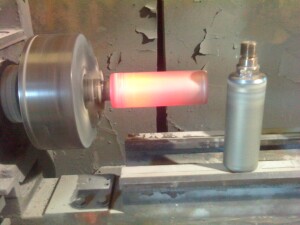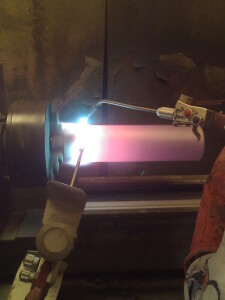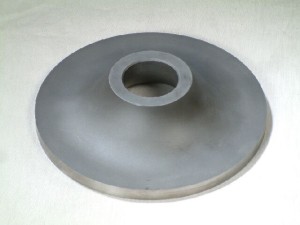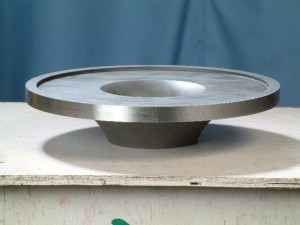Oxy-acetylene welding torch with powder hopper and injection venturi mounted between a gas mixture and nozzle Powder falls through flame on a workplace where weld pool is maintained and the continuous bead is laid down.
Spray and fuse use high heat to increase the bond between the thermal spray coating and the substrate of the part. Unlike other types of thermal spray, spray and fuse create a metallurgical bond between the coating and the surface. This means that instead of relying on friction for coating adhesion, it melds the surface and coating material into one material. Spray and fuse are the difference between adhesion and cohesion.
Spray and Fuse Benefits
- Metallurgically bonded coating
- Hardface overlay alternative
- Hardchrome plating alternative
- Extreme wear resistance
Spray and Fuse Materials
- Colmonoy® 88
- Nickel-Cobalt
- Tungsten Carbide
- Nickel Chrome alloys
- Metco® 16C
Spray and fuse are the best for…
- High-stress components
- Exhaust fans
- Sucker pump components
- Pump pistons
- Sleeves
- Plungers
- Ball Valves
A case study was done by KECPL
Equipment: Atomiser
Name of the wear part: Wear part of wheel disc
Problem: Wear part is made out of Boron Carbide material, which is a kind of ceramic material and is brittle in nature. The raw material impinges at a very high velocity on a rotating disc. The resultant erosion thins the Boron Carbide till it suddenly break in to the pieces. The disc is rotating at 24,000 RPM and the sudden breakage causes heavy damage to other parts.
Cause of the problem: Main cause of wear is erosion at a temperature of 540 C along with centrifugal force due to high rotational speed. The impinging material is hard and has a tendency of caking. This reduces some wear but increases imbalance that may cause vibration and subsequent failure due to variance in centrifugal forces.
Our solution: Boron Carbide was replaced by wear part made of machinable and harden able Titanium Carbide. This material can be processed more easily to manufacture this rather complex profile. TiC isn’t brittle, has high erosion resistance and retains hardness at an elevated temperature of 540 C. The low density doesn’t induce stress on the bearings of the wheel disc that is rotating at 24000 RPM. This application has now been standardized. The wear part is inspected every month during the routine maintenance schedule to study the thinning and to decide on replacement period. The end user managed to save a huge amount of money because of avoidance of sudden break down and unscheduled shut down.

Carbide coating on Plunger
 Spray fuse on Plunger
Spray fuse on Plunger


